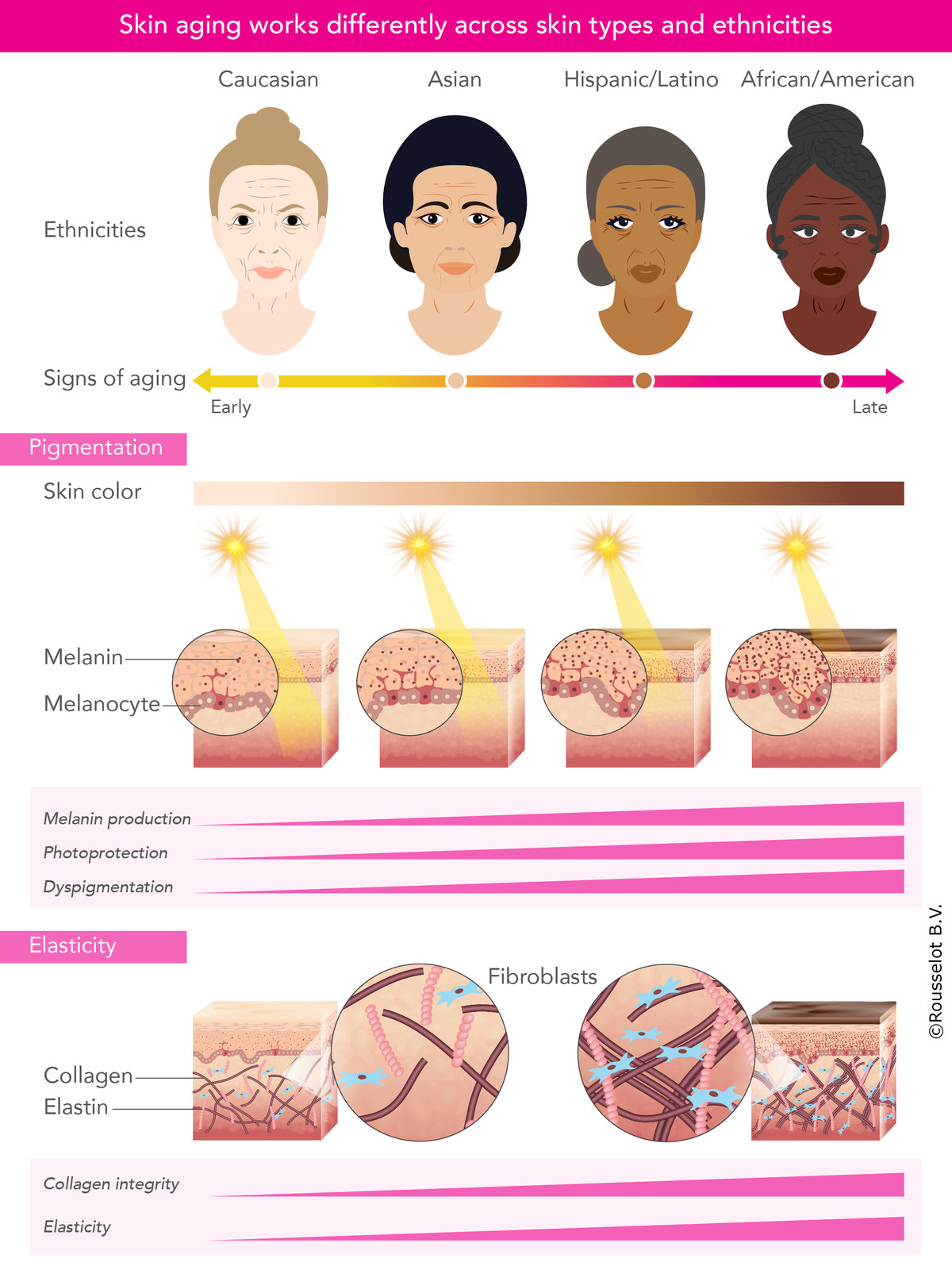How many skin groups are there?
Generally speaking, skin can be categorized into four broad groups: Caucasian, Asian, Hispanic/Latino, and African/American. It is important to note that each of these categories is heterogeneous, so we need to avoid over-generalizing. At the same time, awareness of these four skin groups can help us understand better how much and how our skin is affected by age, depending on our genetic and ethnic background.
What important skin differences are there?
One of the most obvious variations across the four skin groups is skin color. In simple terms, skin color is determined by the amount of melanin in the skin. Caucasians, for example, tend to have a lower amount of melanin, which leads to a lighter skin tone. This can make Caucasians more susceptible to pronounced photoaging, the premature appearance of aging due to damage caused ultraviolet (UV) rays. Darker skin tones have a higher melanin content, which provides stronger photoprotection, leading to less photoaging. The melanin in darker skins, on the other hand, can be unstable, making these skin groups more prone to dyspigmentation, or abnormalities in the formation or distribution of pigment.
There are other differences. For example, Caucasian skin is fragile, usually showing an earlier loss of elastin and collagen fiber structure, which causes wrinkles. Darker skin tones have a compact dermis in the deep layer of the skin, with more active cells and a stronger collagen network. Because of this, dark-skinned people typically do not start wrinkling until 10 to 20 years later.

Which signs of aging do different skin types show?
As a result of these and many other differences, each skin group presents signs of aging in distinct ways. For example:
- In lighter skin tones, such as Caucasian skin, one of the major concerns is the formation and appearance of wrinkles;
- For East Asians, dark spots, or hyperpigmentation, can appear on the light skin;
- For people of Hispanic descent, the formation of pronounced nasolabial folds, or ‘smile lines’, can be a concern;
- In darker skin, for example, in people of African origin, heterogeneous pigmentation can be an issue, creating marks or an uneven tone.
Are scientists researching skincare and ethnicity?
Apart from our ethnic background, each one of us has a unique genetic makeup. This means our skin will be affected by aging in different and often unique ways throughout our lives. All of this confirms that as we investigate the effect of aging on the skin, it is pivotal that we take skin type and ethnicity into account. In our latest study, we made this a priority: by conducting it in Brazil, we were able to study a mixed population with a wide range of ethnicities and skin types. Investing in scientific research of this nature will help us build a better picture of the range of unique skin types in our world – and help you take better care of the health of your skin.
Want to learn more about skin health? Watch this Rousselot Health & Nutrition webinar on collagen peptides for nutricosmetics.
DISCLAIMER:
Rousselot makes no representation or warranty, whether expressed or implied, as to the accuracy, reliability, or completeness of the information, nor does it assume any legal liability, whether direct or indirect, for any information. Use of this information shall be at your discretion and risk. Nothing herein relieves you from carrying out your own suitability determinations and tests and from your obligation to comply with all applicable laws and regulations and to observe all third-party rights. This product is not intended to diagnose, treat, cure, or prevent any disease.
